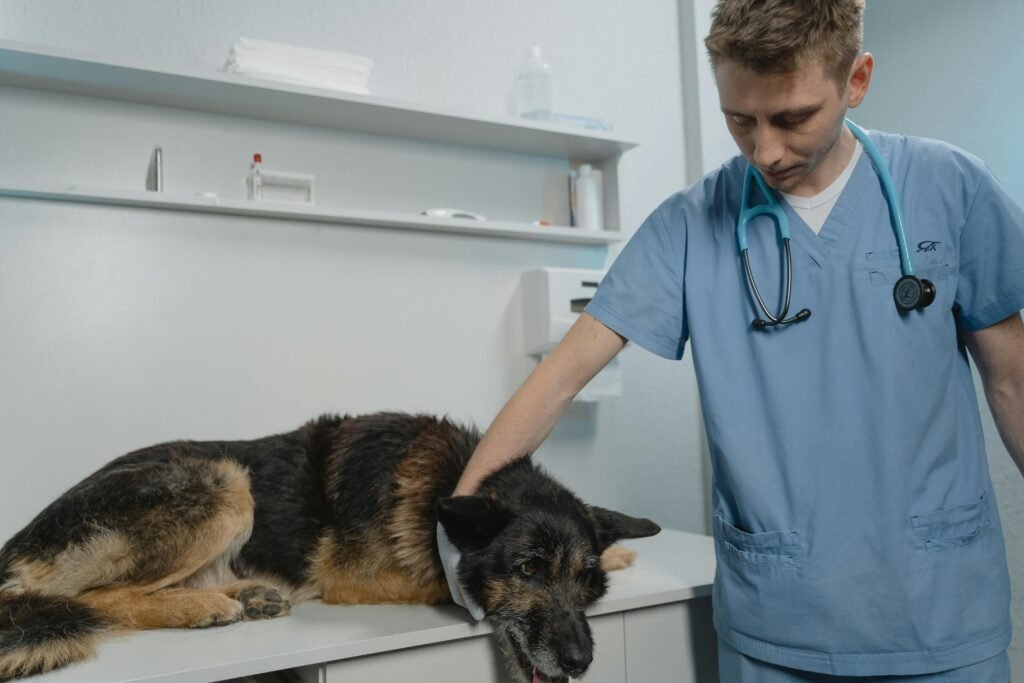Distemper in Dogs: Symptoms, Treatment, and Home Remedies Before the Vet
1. What is Canine Distemper?
If you have ever searched “why is my dog coughing tired and not eating” you are not alone. These symptoms may point to something far more serious than a common cold.
Canine Distemper is a highly contagious and often deadly virus that affects a dog’s respiratory, digestive, and nervous systems. It is especially dangerous for puppies and unvaccinated dogs. Knowing the signs and acting quickly can make all the difference in saving your dog’s life.
Distemper is caused by a virus related to the one that causes measles in humans. It spreads through airborne droplets from coughs and sneezes, shared water and food bowls, or direct contact with an infected animal.
This virus attacks multiple body systems which makes it particularly dangerous. In severe cases it can cause seizures and permanent brain damage.
2. Common Symptoms of Distemper in Dogs
Here are the symptoms vets say every dog owner should know:
Fever – often one of the first signs
Watery or pus-like discharge from eyes and nose
Coughing – persistent and sometimes with gagging
Loss of appetite – refusing food or treats
Vomiting and diarrhoea – leading to dehydration
Lethargy – low energy and weakness
Thickened paw pads – sometimes called “hard pad”
Seizures, muscle twitches, or balance problems in advanced cases
💡 If your dog shows several of these signs, especially after being around other dogs, contact your vet immediately.
3. Why Puppies Are at the Highest Risk
Puppies between 3 and 6 months old are most vulnerable. Their immune systems are still developing and they rely heavily on vaccination for protection. Unvaccinated dogs of any age are also at high risk.

4. Before You Get to the Vet: Home Remedies and Supportive Care
Distemper requires veterinary treatment but you can make your dog more comfortable while you arrange urgent care. These home remedies can help support your dog until they see a vet:
Keep them warm – provide a cosy blanket or bedding
Encourage fluids – offer water or an unflavoured electrolyte solution like Pedialyte in small sips
Feed soft, easy-to-digest food if they are willing to eat such as boiled chicken and rice
Clean discharge from the eyes and nose with a warm damp cloth to help them breathe easier
Isolate your dog from other pets to prevent spreading the virus
Keep the area clean – disinfect surfaces with a pet-safe cleaner or diluted bleach solution
⚠ Important: These steps do not cure distemper. The virus needs immediate professional care to improve your dog’s chances of survival.
5. What To Do If You Suspect Distemper
Call your vet straight away and explain the symptoms
Avoid contact with other animals
Follow your vet’s instructions for safe transport and treatment
Treatment often includes IV fluids, medications to control symptoms, antibiotics for secondary infections, and in some cases hospitalisation.
6. How to Prevent Distemper in Dogs
Vaccinate – start puppy shots at 6 to 8 weeks and keep up with boosters
Avoid high-risk areas until your dog is fully vaccinated
Keep your dog away from sick animals and unknown strays
Maintain good hygiene with clean bowls, bedding, and play areas

7. Final Word
Distemper is a frightening illness but it is preventable. Vaccination, good hygiene, and quick action if symptoms appear are your best defences. If your dog shows signs like fever, coughing, or neurological issues do not wait. Early treatment can make all the difference in the outcome.

